Australian Tea Week, Day 3: “Japanese Style Green Tea . . . From Australia”
I received the subject of today’s blog from this fingergun-toting, doughnut-destroying badass.

This is Naomi Rosen; no, she’s not Australian. But she could certainly pass for one. She’s the purveyor of Joy’s Teaspoon. Aside from selling some really good teas, she could also probably take down a bear singlehandedly . . . and show more love in her left pinkie . . . while still restraining said bear. This last summer, she was gracious enough to let me crash for a few nights while attending World Tea Expo. On my last day with her, she decided to part ways with some of these lovelies.
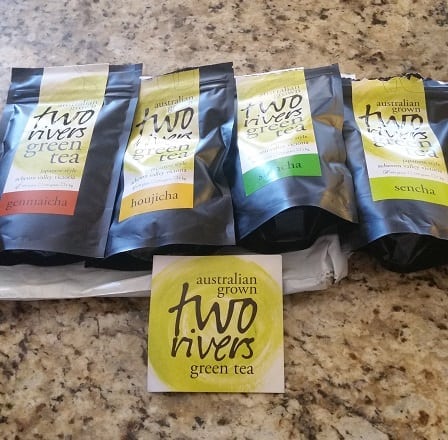
Japanese style green tea. From Australia.
In 2015, she happened upon the company while doing a random Google search about Indonesian tea. Like any Google search I’ve ever done, it led down a tangent. Naomi, then, contacted them and purchased their entire line.
The company in question was Two Rivers Green Tea—a tea garden based in Victoria, at the junction of the Acheron and Goulburn Rivers. The garden was started in 2001, originally comprised of 170,000 tea plants—from cuttings. The cultivars they specialized in were all Japanese; namely, Sayakamakaori, Yabukita and Okuhikaori. This also played a part in influencing the direction the garden focused its efforts: Japanese style green tea.
The lead farmer—Will Leckey—was even the subject of a Japanese beer featurette. No joke.
In all seriousness, though? That garden looks flippin’ gorgeous, rows upon rows of tea plants ringed by a periphery of eucalyptus trees. Idyllic, I tell ya.
Anyway, Naomi gave me free reign of her Two Rivers supply. (A mighty dangerous prospect.) She was in possession of their entire line—a shincha, a sencha, a hojicha . . . and *sigh* . . . a genmaicha. No, I didn’t take the genmaicha. Yes, I’m racist against genmaicha.
It’s just . . . RICE BELONGS IN SOUP! NOT TEA!!!
Moving along . . .
I took generous samples of the other three. All were from the 2015 harvest year, but they still smelled pretty darn good. Meaning, they kept pretty well. I dove into the hojicha over the summer, and . . .
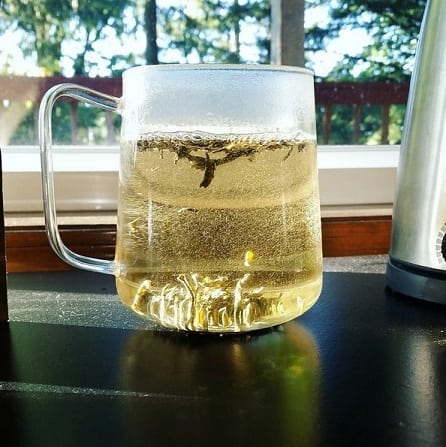
Yep, a good hojicha likeness. I didn’t pay it much more thought than that at the time. I was still in the middle of moving. It would be another four months before I dipped into all three. Simultaneously.
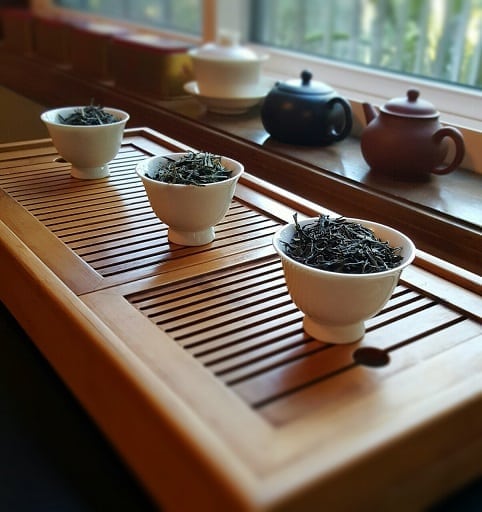
For brewing, I consulted the brewing instructions Two Rivers had on their site. They recommended a hot water temp of roughly 160F for the shincha, 176F for the sencha, and 180+ for the hojicha. I used a teaspoon of leaves for each tea in the only Japanese teapot in my possession. It had the best strainer.
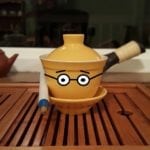 Editor Skippy Note: It should be prefaced that the following samples were from—as mentioned above—2015. As such, they should, in no way, be considered reflective of how the 2016 harvest year turned out. In addition, some “aging” may have occurred that affected the below tasting notes.
Editor Skippy Note: It should be prefaced that the following samples were from—as mentioned above—2015. As such, they should, in no way, be considered reflective of how the 2016 harvest year turned out. In addition, some “aging” may have occurred that affected the below tasting notes.
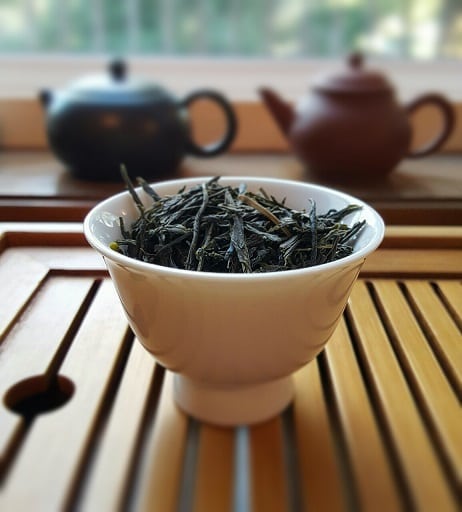
I’ll first start off by saying, this was unlike any shincha I’ve ever seen. The leaves were larger, appeared much older, and the leaf cut was longer. Honestly, the flat, thick cut of the leaves reminded me a bit of the Chinese take on sencha. Only not as “Long Jing”-ish in appearance. However, the youth definitely showed up in the aroma—all sorts of spring/fruity scents to choose from there.

The liquor brewed light green with . . . not much of an aroma to speak of—a faint hint of green tea grass but not much else. The joy, as usual, was in the taste. If Spring had a distilled taste, it would be this. Exact taster notes fail me, but the flavor was all youthful green tea exuberance, coupled with fruity precociousness. And the aftertaste was all of that and . . . peaceful. Like watching a toddler finally doze off after running amok.

If it can be believed, the leaves for the full-on sencha did appear much more mature than the shincha. The color wasn’t as deep a green, the leaf cut was a bit broader, but also more uniform. And, of course, the aroma was grassier and possessed more body. I was pleased to note, though, that the youthful fruitiness was still there, if only slightly dialed down.
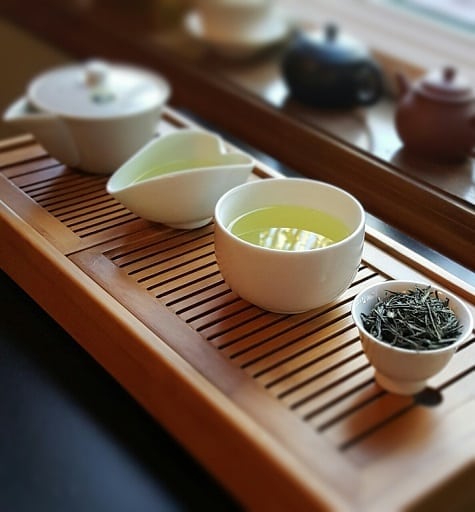
Like any other sencha I’ve ever known, this brewed up bright, radioactive green. Japanese(-style) green teas are the only ones that have that palette on brew up. The aroma, however, was mild in comparison to actual Japanese sencha. No pungent grass or artichoke heart-smelling steam; just a pleasant and mild “green tea” aroma. The taste was also markedly different. While it bore some similarities to kamairicha or Shizuokan Zairai on first sip, similarities to anything Japanese ended there.
Strangely enough, if I were to make an immediate comparison . . . it was like a Scottish green tea I had a year ago. Vague apricotty/grapefruity notes at that top, followed by a creamy/grassy trail-off? Yep, definitely a close cousin.
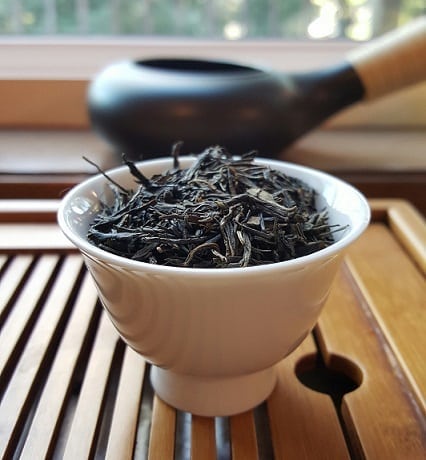
I’m going to hazard a guess that no one got the memo defining what hojicha is. Typically, it’s the stalks, stems and leaves of the tea plants after the higher grade material from the bush has been plucked. It’s made from the material left over from the last harvest . . . then roasted over charcoal. Funny thing, though? I saw no twigs in this batch—only leaves. That and some of the leaves appeared of higher grade material.
Sure, there were some fannings grade leaf matter and a sparse amount of twigs, but overall . . . yeah . . . this was more “roasted sencha” than “hojicha”. The aroma—as with the other two—betrayed its roots, smelling like a street roasted green tea . . . which is all anyone asks for of a hojicha. If I had one nitpick, it’s that this wasn’t roasted enough.
Well . . . that’s what I thought at first.
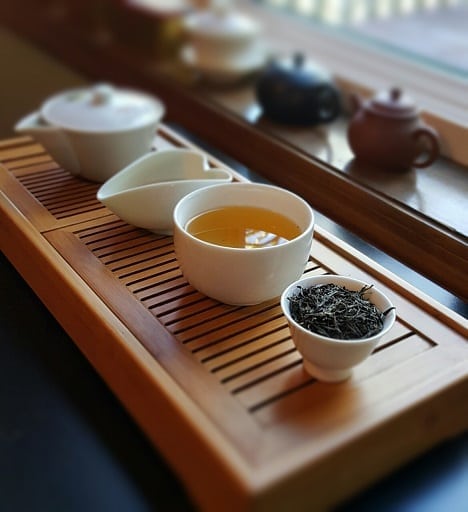
The liquor brewed up straight brass with an aroma of cooked figs. If one was reaching, they could say it smelled like a roasted high altitude oolong, but . . . nah . . . mostly figs. That comparison continued on taste; roastiness came first, then a subtly smooth woodiness, followed by a smidge of grassiness, and then back to roasted figs. I take it back; this was definitely a hojicha. In fact, of all three of the teas, this was the most Japanese of them all—at least in taste.
While I was editing the photos (and taster notes) for this blog—along with working on another blog post—I did the unthinkable.
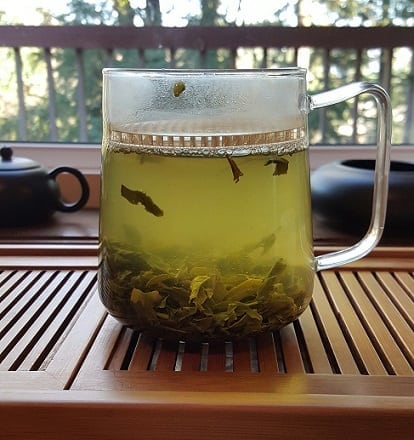
Yep, that’s right. I took the spent leaves from the three-tea-tasting . . . and brewed them all together. I think that should be a final endurance test for a multi-tea brewing; drinking them all as one. If they hold up? Bonus points!
Sounds like an Aussie thing to do, aye?
Whatever. I’m tired. It’s midnight right now (at the time of this writing).
This concludes Australian Tea Week.
Next week? Business as (un)usual.
Leave a Reply